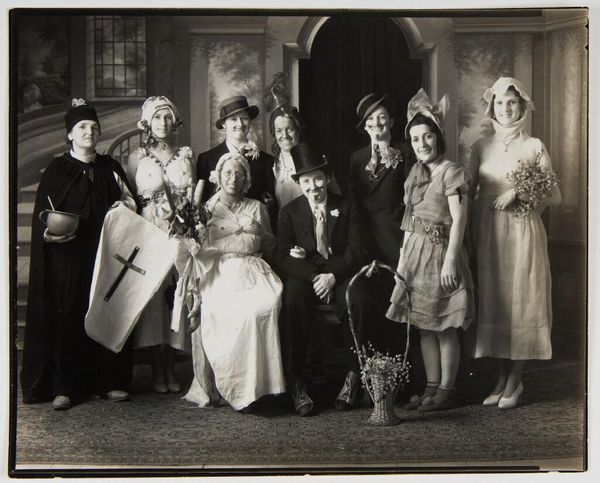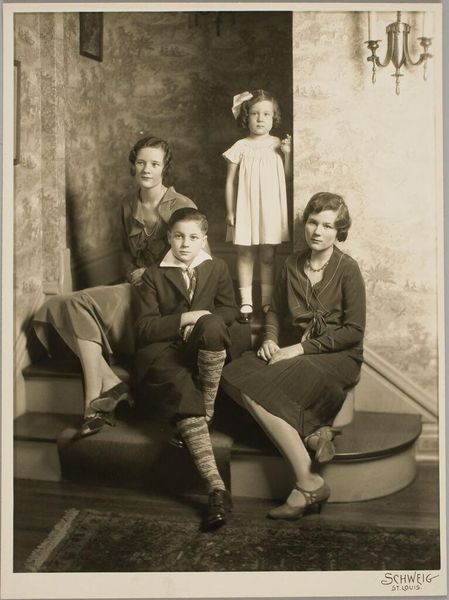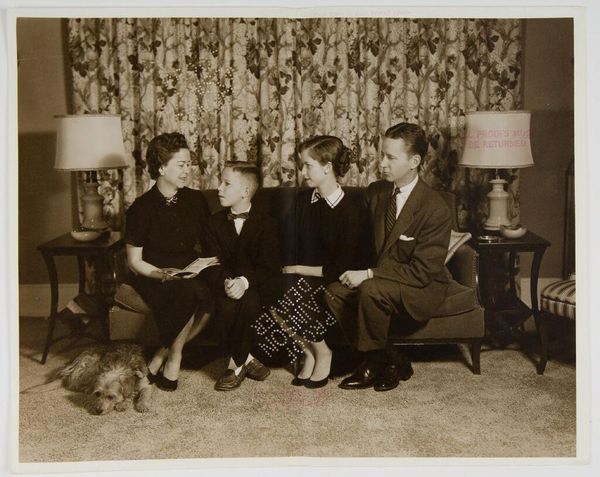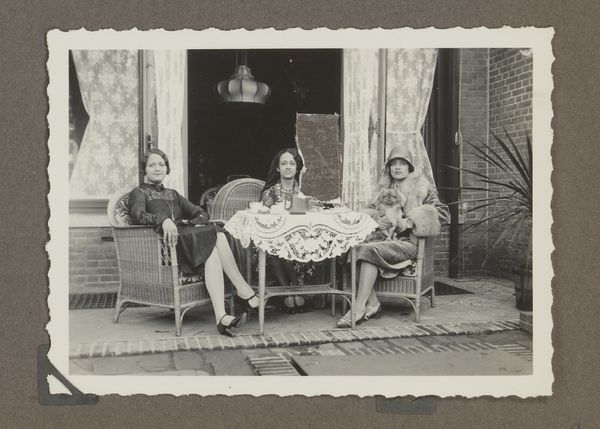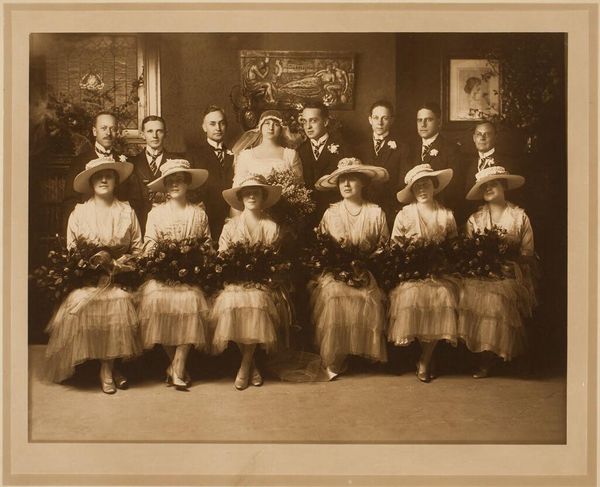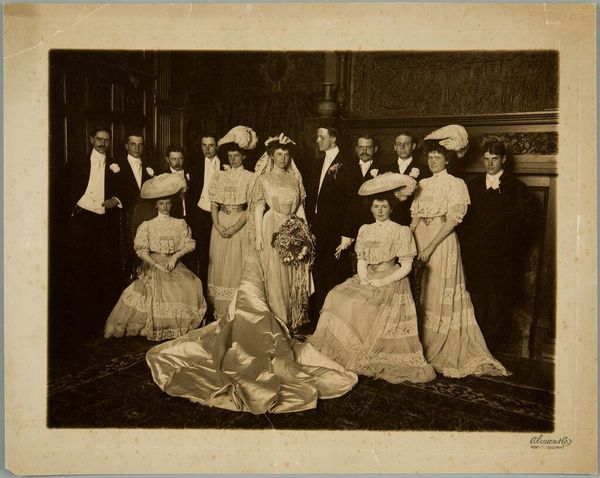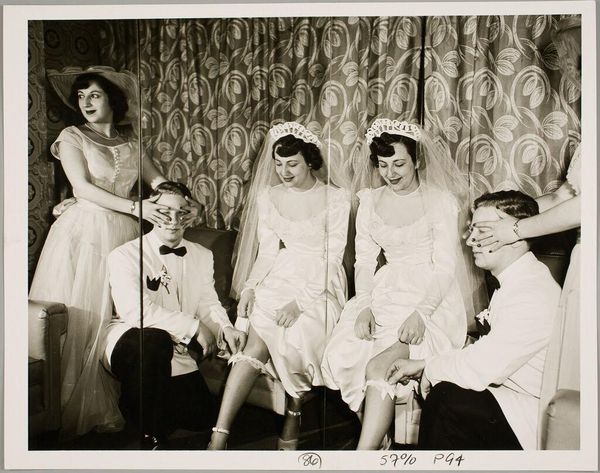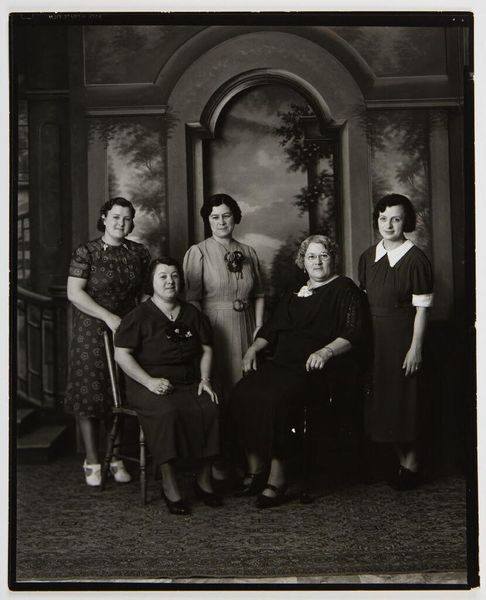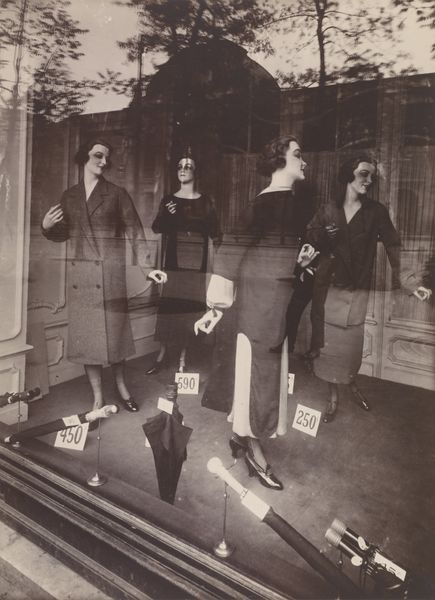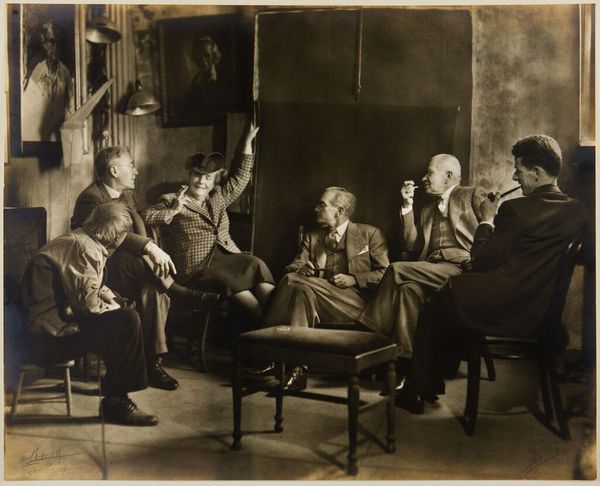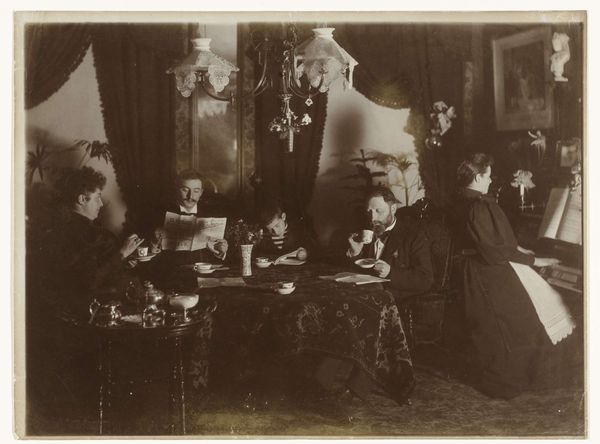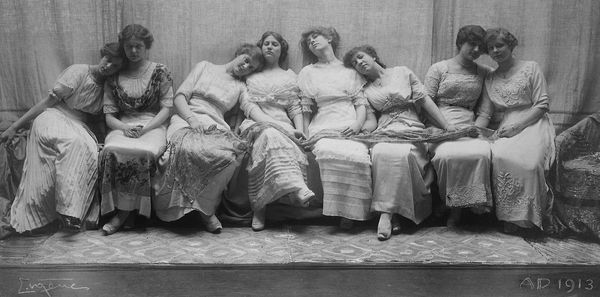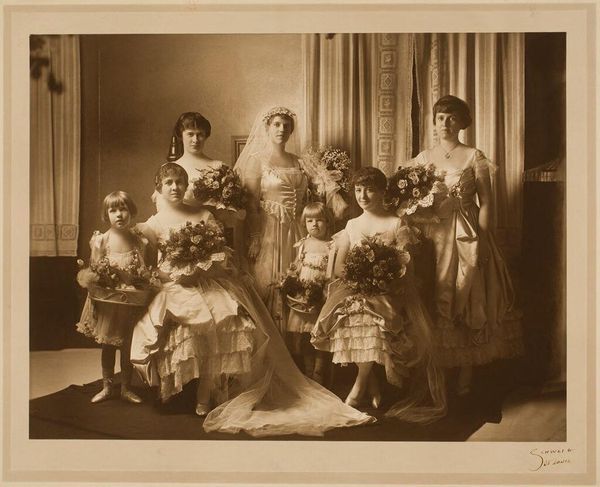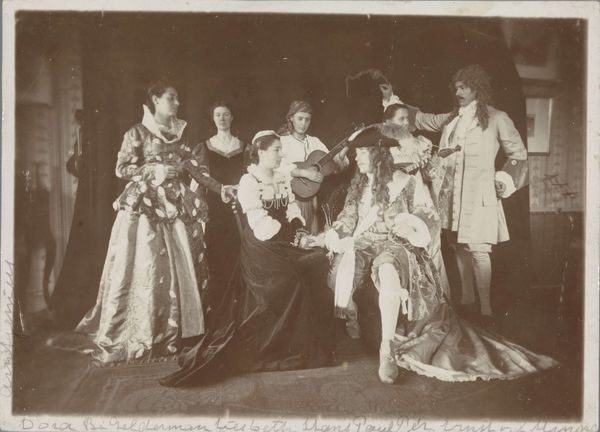
Dimensions: image: 17.78 × 23.81 cm (7 × 9 3/8 in.) sheet: 20.32 × 25.4 cm (8 × 10 in.)
Copyright: National Gallery of Art: CC0 1.0
Editor: This gelatin-silver print, “Blumstein’s Sales Girls” by James Van Der Zee, captures a group of women in 1930. The composition and staging seem so deliberate; there's almost a painterly quality to it, like a tableau vivant. What visual relationships do you see connecting the subjects and setting? Curator: A semiotic reading immediately unveils certain key structural features. Note how the composition unfolds with attention to layering, using subtle tonal gradations, allowing your eyes to oscillate from the floral arrangement in the background to the varying heights of the figures, as well as how the curves of the backdrop echo their rounded hairstyles. These aspects certainly underscore the constructed nature of the image and reveal interesting compositional patterns. Editor: That's a different way of seeing it. So, rather than simply capturing a real scene, it's deliberately composed using lines and shapes and light? Curator: Precisely. Consider, furthermore, the deployment of contrasting textures - smooth skin, plush fabric. These elements enhance the formal and aesthetic experience of the image, calling our attention to the interplay between surface and depth, structure and form, presence and absence. The visual rhyming occurring in the arrangement lends itself to that particular perspective. Do you perceive that contrast creates tension? Editor: Now that you mention it, I do notice the varying textures creating almost an ambiguous interplay in the figures, from smooth skin to what seems like the dark fabric around the chair to light clothing, and creates interesting balance, and an interesting focus for my gaze. Curator: Exactly. And does noticing the placement and orientation change your engagement with the figures' subjectivities? Do their stories start to form based on the composition alone? Editor: It adds layers of meaning! I've never looked at photography quite this way, but breaking it down visually unlocks all sorts of readings, so that it doesn't feel like such a simple capture. It really makes you think about every choice the artist made. Curator: Indeed, focusing on the aesthetic apparatus, what Roman Jakobson calls the 'poetic function,' encourages this understanding and fosters deeper consideration of art’s meaning.
Comments
No comments
Be the first to comment and join the conversation on the ultimate creative platform.
